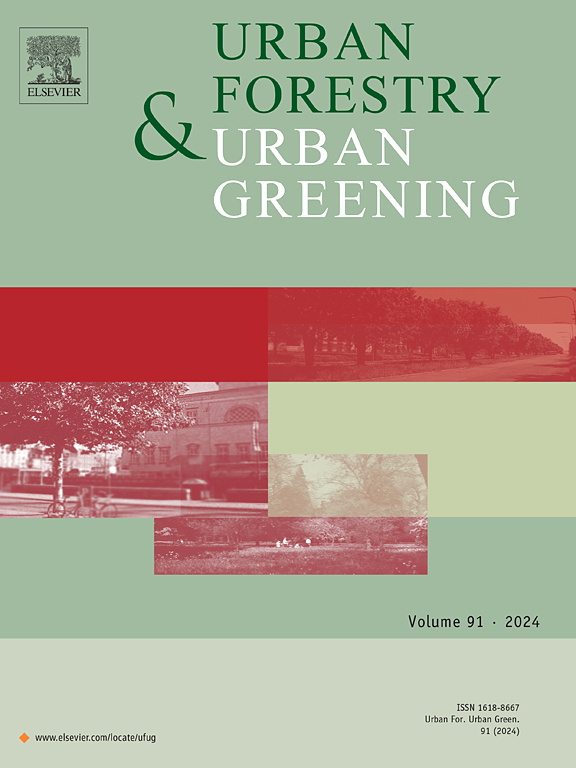Subjective perception or the physical environment: Which matters more for public area visitation thresholds across different COVID-19 pandemic stages?
IF 6
2区 环境科学与生态学
Q1 ENVIRONMENTAL STUDIES
引用次数: 0
Abstract
Urban visiting patterns refer to how people visit, use, and move through urban spaces like parks, business districts, and public plazas. Green spaces and businesses significantly influence visitation patterns in urban areas, as key indicators of urban vitality. The COVID-19 pandemic reshaped these dynamic patterns. This research examines visitation patterns in Las Vegas from 2019 to 2023, focusing on green spaces and businesses in relation to environment and human perceptions during the pandemic. We integrated GPS data, Google reviews, and street-view images, applying natural language processing (NLP) and machine learning to analyze sentiment, comment topics, and environmental features, with partial dependence plots (PDP) exploring correlations with visitation patterns. Results reveal both park and business visitation patterns were significantly altered by the COVID-19 pandemic, impacting behaviors and emotional needs. There are significant differences in the usage and perception of parks and commercial areas. Parks, with their natural landscapes, offer restorative and emotional experiences, while business environments cater to functional and service-based needs. Environmental factors better explain park visitation, while sentiment and comment topics better explain business visits. Green spaces demonstrate greater crisis resilience than business areas through their environmental benefits and adaptability. Pre-pandemic, parks were valued primarily for entertainment facilities and activities; post-pandemic, natural elements and infrastructure gained importance. These findings emphasize the need for urban design that integrates green spaces which provide opportunities for physical activity, social interaction, and mental restoration to better withstand future challenges. Planners and policymakers should prioritize green spaces for both their physical and emotional benefits.
主观感知还是物理环境:在不同的COVID-19大流行阶段,公共区域访问阈值哪个更重要?
城市访问模式是指人们如何访问、使用和穿越城市空间,如公园、商业区和公共广场。作为城市活力的关键指标,绿地和商业显著影响城市地区的游客模式。2019冠状病毒病大流行重塑了这些动态模式。本研究调查了2019年至2023年拉斯维加斯的游客模式,重点关注大流行期间与环境和人类认知相关的绿地和企业。我们整合了GPS数据、谷歌评论和街景图像,应用自然语言处理(NLP)和机器学习来分析情绪、评论主题和环境特征,并使用部分依赖图(PDP)探索与访问模式的相关性。结果显示,2019冠状病毒病大流行显著改变了公园和商务访问模式,影响了行为和情感需求。公园和商业区在使用和感知上存在显著差异。公园拥有自然景观,提供恢复性和情感体验,而商业环境则迎合功能和服务需求。环境因素能更好地解释公园游客,而情感和评论话题能更好地解释商务游客。绿色空间通过其环境效益和适应性表现出比商业区域更强的危机恢复能力。大流行前,公园的价值主要在于娱乐设施和活动;大流行后,自然因素和基础设施变得重要起来。这些发现强调了城市设计需要整合绿色空间,为身体活动、社交互动和精神恢复提供机会,以更好地应对未来的挑战。规划者和决策者应该优先考虑绿色空间对身体和情感的好处。
本文章由计算机程序翻译,如有差异,请以英文原文为准。
求助全文
约1分钟内获得全文
求助全文
来源期刊

Urban Forestry & Urban Greening
FORESTRY-
CiteScore
11.70
自引率
12.50%
发文量
289
审稿时长
70 days
期刊介绍:
Urban Forestry and Urban Greening is a refereed, international journal aimed at presenting high-quality research with urban and peri-urban woody and non-woody vegetation and its use, planning, design, establishment and management as its main topics. Urban Forestry and Urban Greening concentrates on all tree-dominated (as joint together in the urban forest) as well as other green resources in and around urban areas, such as woodlands, public and private urban parks and gardens, urban nature areas, street tree and square plantations, botanical gardens and cemeteries.
The journal welcomes basic and applied research papers, as well as review papers and short communications. Contributions should focus on one or more of the following aspects:
-Form and functions of urban forests and other vegetation, including aspects of urban ecology.
-Policy-making, planning and design related to urban forests and other vegetation.
-Selection and establishment of tree resources and other vegetation for urban environments.
-Management of urban forests and other vegetation.
Original contributions of a high academic standard are invited from a wide range of disciplines and fields, including forestry, biology, horticulture, arboriculture, landscape ecology, pathology, soil science, hydrology, landscape architecture, landscape planning, urban planning and design, economics, sociology, environmental psychology, public health, and education.
 求助内容:
求助内容: 应助结果提醒方式:
应助结果提醒方式:


